
1
Peripheral nerve injury:
Causes are: Due to
1. Truma
2. Enterapment (compression)
3. Disease
The results of nerve injury are:
1. Motor lesion results in:
a. Complete paralysis of the muscle supplied by the affected nerve
b. Muscle weakness when try to perform a resisted movement .
2. Sensory lesion : loss of sensation over the skin of the area supplied by the
affected nerve .
IS a branch from lateral cord of
nerve injury:
Musculocutaneous
brachial plexuses .It supplies the biceps and coracobrachialis the most common type of
injury is entrapment with in coracobrachialis muscle.
•
Motor lesion result in
Weak elbow flexion & weak supination of forearm.
Sensory lesion: result
loss of sensation from the lateral aspect of the forearm.
:
injury
Median nerve
The injury of median nerve at anterior aspect of elbow due to supracondylar fracture of
humerus or due to stab wound proximal flexor retinaculum ;results in :
Motor lesion
forearm kept in supine position; due to paralysis of pronators muscle.
*
*weak wrist flexion due to paralysis of flexor muscles.
*adduction by unaffected flexor carpiulnaris which is supplied by ulnar nerve.
*extension of interphalangeal joints of index and middle fingers due to paralysis of flexor
digitorum superficialis & lateral part of flexor digitorum profunda (When ask the patient
to make fist, the index and middle fingers remain straight, while little and ring fingers are
flex) .
*Flexion of terminal phalanx of thumb is lost due to paralysis of flexor pollicis longus.
*Wasting of thenar eminence.
*Thumb is adducted and laterally rotated and the hand looks apelike.
•
Sensory Lesion
Skin sensation is lost on the lateral 1/2 of the palm of the hand and palmar aspect of
lateral 3and 1/2fingers .Sensory loss over the skin of the distal part of dorsal surfaces
of lateral 3 and 1/2 fingers.
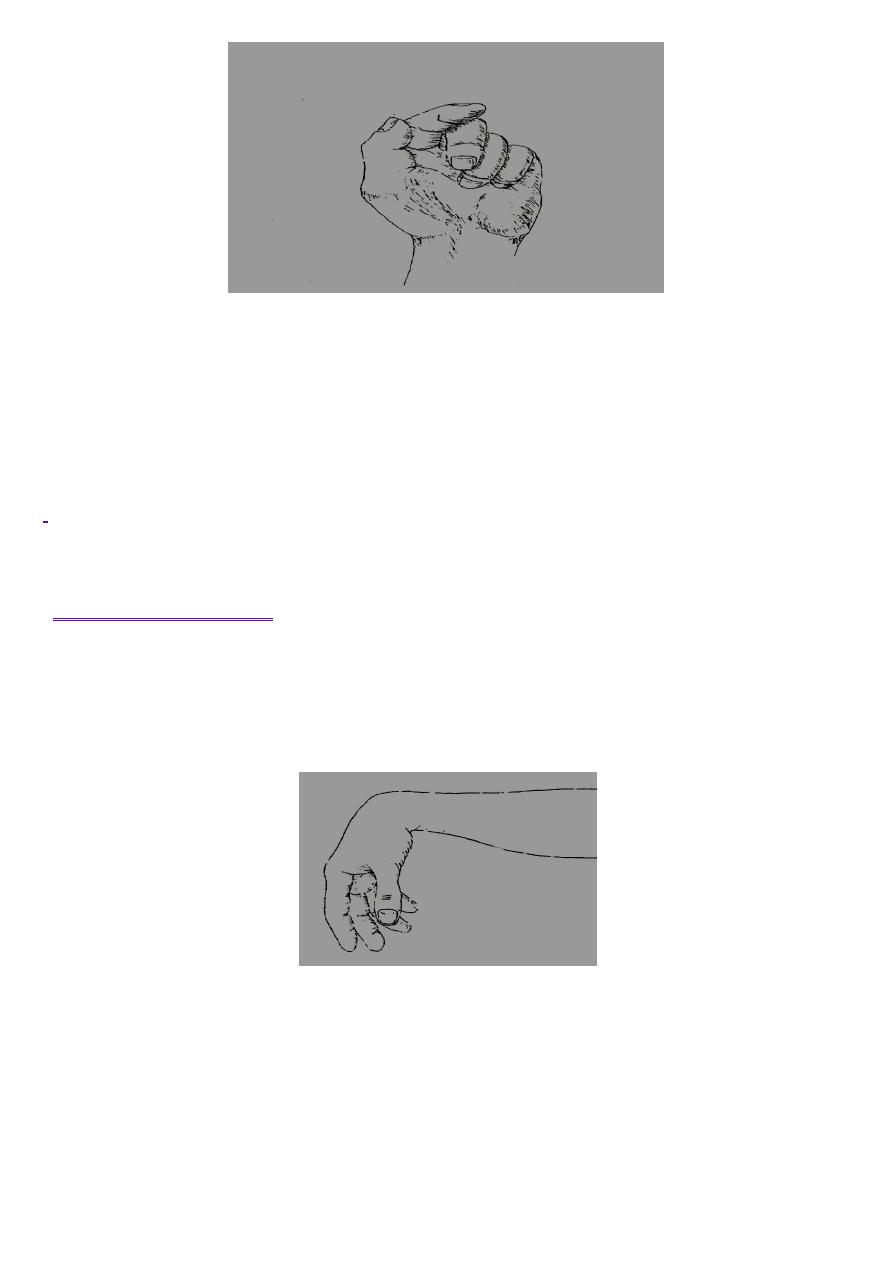
2
Paralysis of median nerve
Apelike hand
:
Radial nerve injury
It is a branch of posterior cord of brachial plexuses. It can be affected by trauma such as
compression with in axilla. Fracture of shaft of hummers or entrapment of its deep
branch by supinator.
•
The injyry of the deep branch is caused
:by fracture of proximal end of radius&
dislocation of head of radius .
The injury of the superficial branch is caused stab wound.
,results in :
common in axilla and spiral groove
Injury to radial nerve is
paralysis of triceps and long extensor of wrist .
failure of extension of elbow wrist and fingers .
Wrist drop result due to the action of unopposed flexor muscles of wrist .
Brachioradialis and supinator are also paralyzed, but supination is performed by
biceps brachii .
WRIST DROP
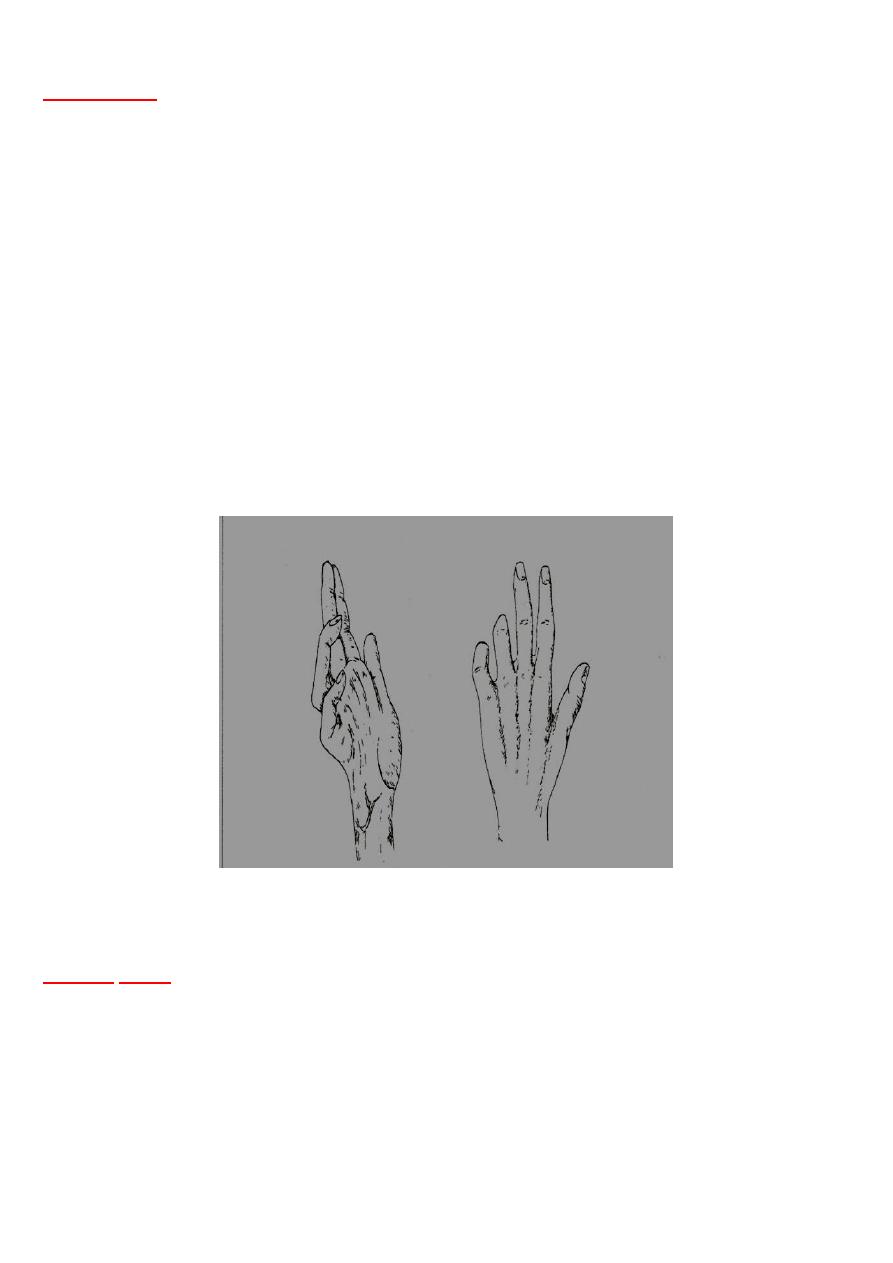
3
Ulnar nerve injury
•
Motor lesion
Flexion of the wrist joint will result in abduction due to the action of unaffected
flexor carpi radials and paralysis of flexor carpiulnaris . .
The medial border of the front of forearm will show flattening due to wasting of
these muscles.
Paralysis of small muscles of the hand except the muscles of thenar eminence and
1st two lumbricals, which are supplied by median nerve. The patient is unable to grip a
piece of paper between his fingers.
*Paralysis of adductor pollicis muscle results in unability to grip apiece of paper
between thumb and index fingers.
*Paralysis of lumbricals and interosseous muscles result in hyperextension of
metacarpophalangeal joints of 4th and 5th fingers and flexion of interphalangeal
joints. In long standing case the hand assumes the characteristic claw deformity.
Wasting of the hypothenar, eminence and losses of convex carve of the medial border
of the hand.
Claw hand deformity
•
lesion
ensory
S
Loss of skin sensation over the anterior and posterior surface of medial 1/3rd of the
hand and 1 and 1/2 finger.
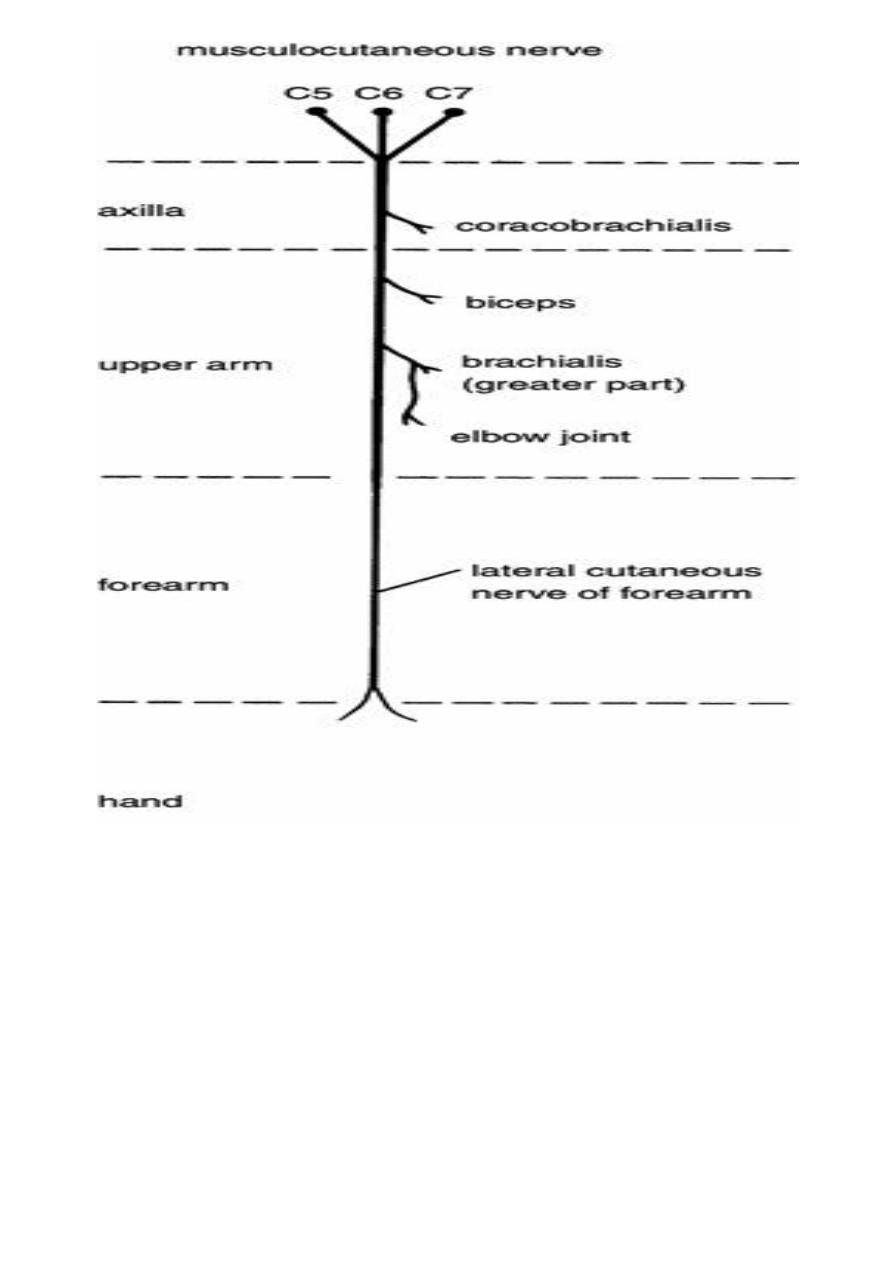
4
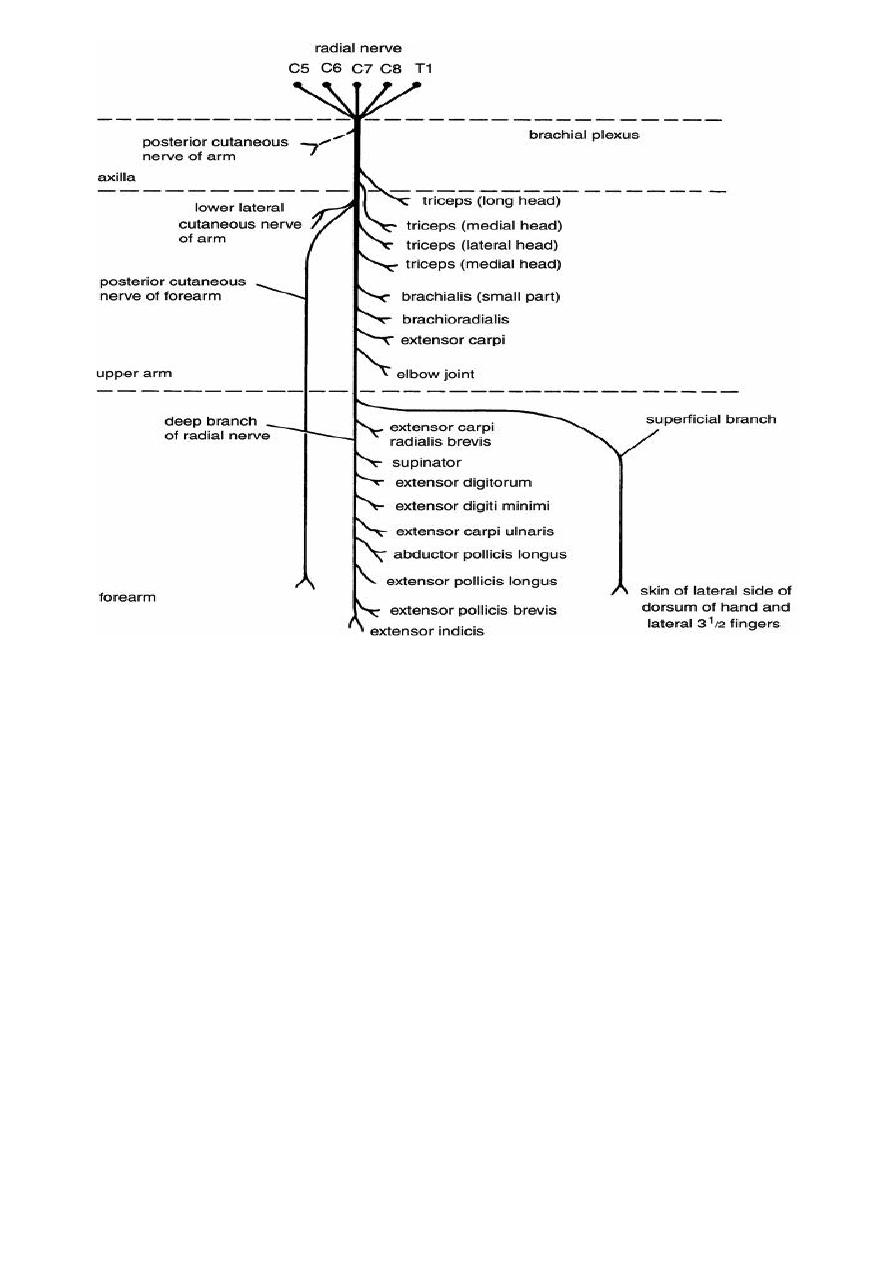
5
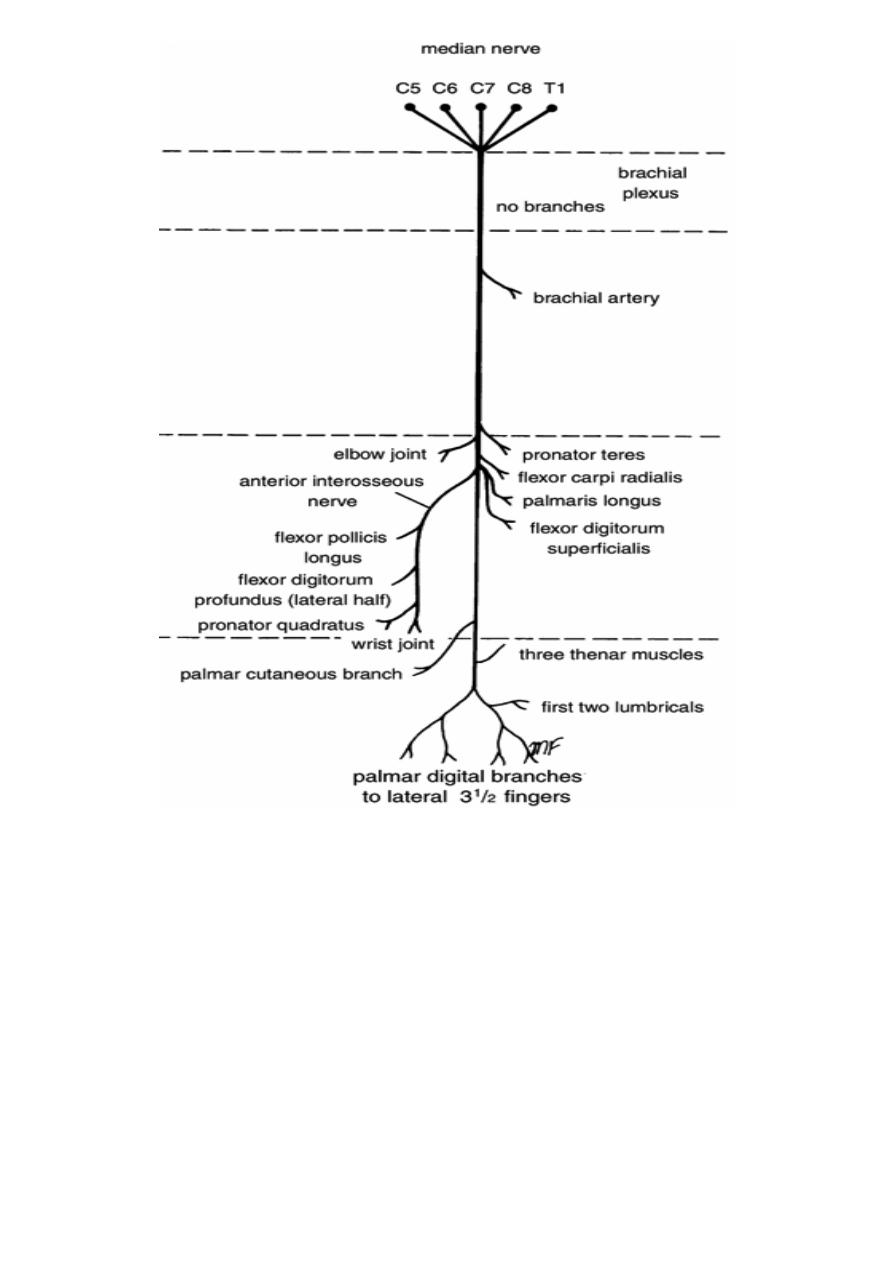
6
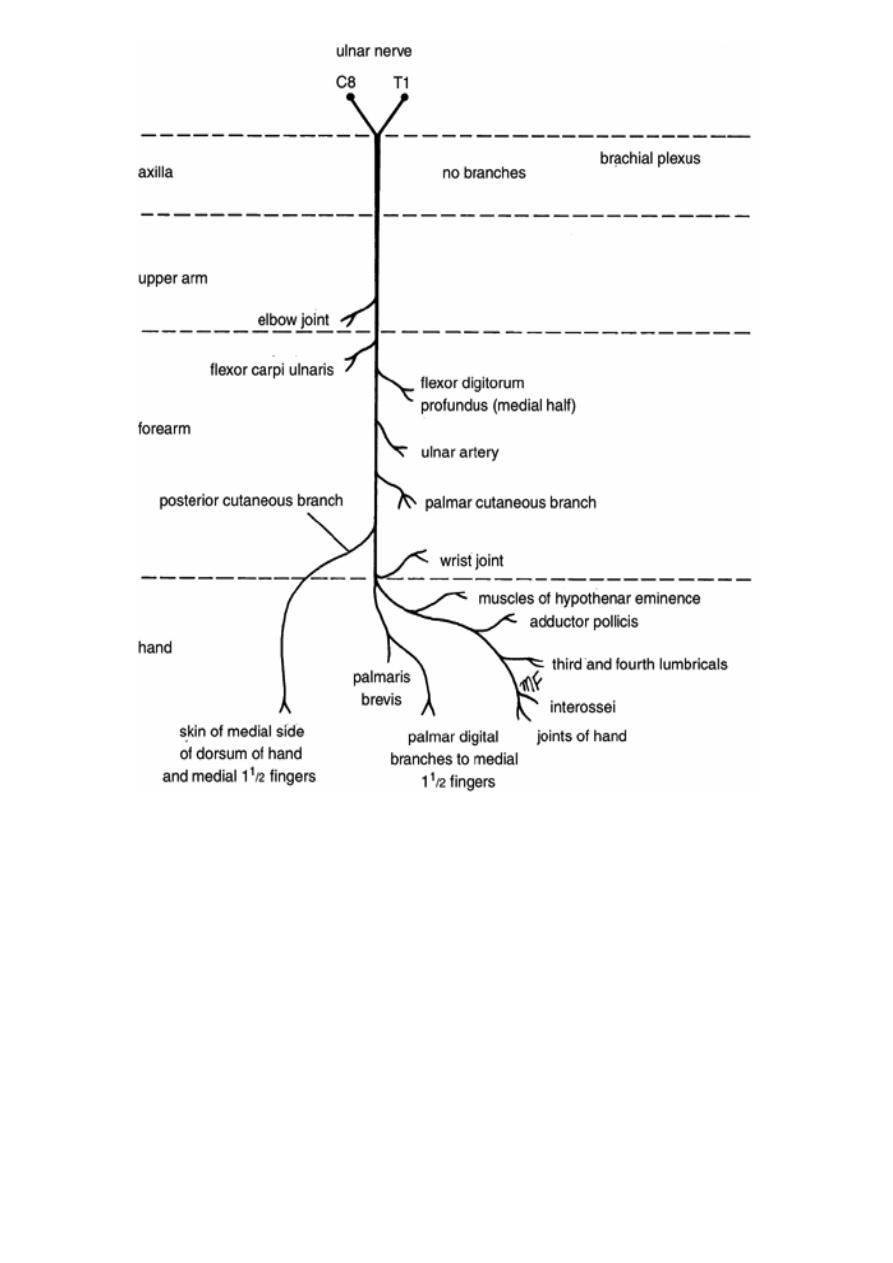
7
